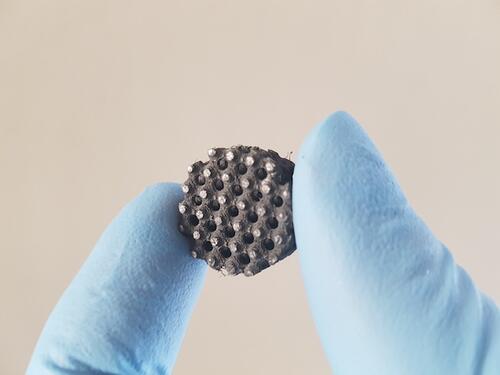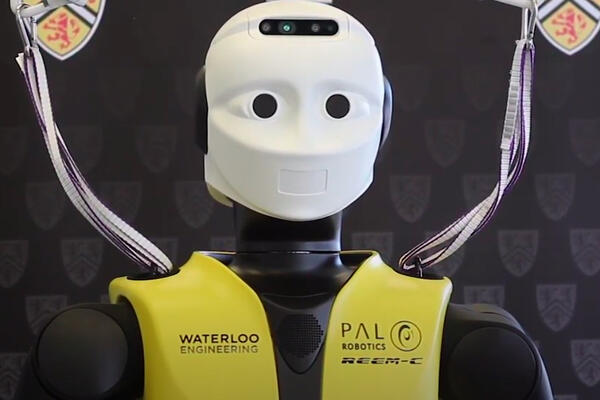
Tough, flexible sensor invented for wearable tech
Researchers have used 3D printing and nanotechnology to create a sensor for wearable devices to monitor everything from vital signs to athletic performance

Researchers have used 3D printing and nanotechnology to create a sensor for wearable devices to monitor everything from vital signs to athletic performance
By Media RelationsResearchers have utilized 3D printing and nanotechnology to create a durable, flexible sensor for wearable devices to monitor everything from vital signs to athletic performance.
The new technology, developed by engineers at the University of Waterloo, combines silicone rubber with ultra-thin layers of graphene in a material ideal for making wristbands or insoles in running shoes.
When that rubber material bends or moves, electrical signals are created by the highly conductive, nanoscale graphene embedded within its engineered honeycomb structure.
“Silicone gives us the flexibility and durability required for biomonitoring applications, and the added, embedded graphene makes it an effective sensor,” said Ehsan Toyserkani, research director at the Multi-Scale Additive Manufacturing (MSAM) Lab at Waterloo. “It’s all together in a single part.”
Fabricating a silicone rubber structure with such complex internal features is only possible using state-of-the-art 3D printing – also known as additive manufacturing - equipment and processes.

The rubber-graphene material is extremely flexible and durable in addition to highly conductive.
“It can be used in the harshest environments, in extreme temperatures and humidity,” said Elham Davoodi, an engineering PhD student at Waterloo who led the project. “It could even withstand being washed with your laundry.”
The material and the 3D printing process enable custom-made devices to precisely fit the body shapes of users, while also improving comfort compared to existing wearable devices and reducing manufacturing costs due to simplicity.
Toyserkani, a professor of mechanical and mechatronics engineering, said the rubber-graphene sensor can be paired with electronic components to make wearable devices that record heart and breathing rates, register the forces exerted when athletes run, allow doctors to remotely monitor patients and numerous other potential applications.
Researchers from the University of California, Los Angeles and the University of British Columbia collaborated on the project.
The latest in a series of papers on the research, 3D-Printed Ultra-Robust Surface-Doped Porous Silicone Sensors for Wearable Biomonitoring, appears in the journal ACS Nano.

Read more
Eight Waterloo researchers receive $25,000 each to develop health-tech solutions for Grand River Hospital, St. Mary’s Hospital and the KW4 Ontario Health Team

Read more
New collaboration will allow quantum researchers to study effects of solar radiation on quantum computing

Read more
New Waterloo Engineering-led research quickens the response time for robots to react to human conversation
The University of Waterloo acknowledges that much of our work takes place on the traditional territory of the Neutral, Anishinaabeg and Haudenosaunee peoples. Our main campus is situated on the Haldimand Tract, the land granted to the Six Nations that includes six miles on each side of the Grand River. Our active work toward reconciliation takes place across our campuses through research, learning, teaching, and community building, and is co-ordinated within the Office of Indigenous Relations.